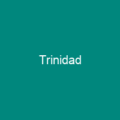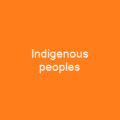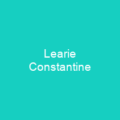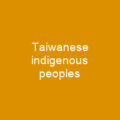Trinidad and Tobago: A Caribbean Jewel with a Rich History
Imagine stepping into the vibrant heart of Trinidad and Tobago, where history whispers through the streets and culture dances in the air. This southernmost island nation in the Caribbean is not just a place; it’s a tapestry woven from diverse threads of indigenous, African, Indian, Creole, European, Chinese, and Latino-Hispanic influences. How can such a small country hold so many stories?
The Early Days
Trinidad and Tobago’s history begins with the indigenous peoples who called these islands home before Spanish colonization. In 1498, Christopher Columbus arrived, marking the beginning of a tumultuous period. The island was ceded to Britain in 1802 and gained independence in 1962. What challenges did this transition from colonial rule to self-governance bring?
The Arrival of Europeans
European powers attempted to settle Tobago during the 1620s, with limited success. The Dutch, English, and Couronians tried their hand, while France sent settlers starting from 1654. By 1793, Britain controlled Tobago. How did these various groups shape the islands’ early development?
The Indigenous Population
In Trinidad, the Spanish struggled to control the indigenous population. The Catholic friars tried to convert them in the 17th century, but tensions escalated into violence. By the end of the century, the native population was nearly wiped out due to disease and slave-raiding. What lessons can we draw from this tragic history?
The Arrival of African Slaves
In 1783, a Cédula de Población granted Roman Catholic foreign settlers who were willing to swear allegiance to the King of Spain. This led to an influx of French planters with their slaves, establishing an agriculture-based economy in Trinidad. How did this change the social and economic landscape?
The Arrival of Indian Indentured Workers
In 1845, indentured Indian workers began arriving to work on sugar plantations. By 1900, over half of Trinidad’s sugar cane was produced by independent Indian farmers. What impact did this wave of immigration have?
The Path to Independence
Trinidad and Tobago gained universal suffrage in 1945 and formed parties along racial lines. The country became part of the West Indies Federation but dissolved after Jamaica’s withdrawal in 1961. It chose to seek independence from the UK on its own and achieved it on August 31, 1962. How did this journey towards self-governance shape the nation?
The Modern Era
In the contemporary era, Trinidad and Tobago gained independence with Elizabeth II as head of state. Eric Williams led the country until his death in 1981. The country has since faced numerous challenges, including economic fluctuations, political instability, and social issues. How does this history inform its current path?
The Economy
Trinidad and Tobago’s economy is heavily influenced by the petroleum industry. Oil and gas account for about 40% of GDP and 80% of exports. The country has transitioned from an oil-based economy to a natural gas-based one, with recent growth driven by investments in LNG, petrochemicals, and steel. How does this reliance on fossil fuels impact the nation’s future?
Culture
The country has a unique culture with influences from African, Indian, Creole, European, Chinese, Indigenous, Latino-Hispanic, and Arab communities. Steelpan music, limbo dance competition, and carnival with elaborate costumes are notable aspects of the islands’ culture. How does this cultural diversity manifest in daily life?
Sports
Cricket is a national sport, with intense rivalry with Caribbean neighbors. The country represents West Indies team in Test cricket, One Day International and Twenty20 cricket. Brian Lara, world record holder, was born in Santa Cruz. How does sports unite the nation?
Education
Trinidad and Tobago has a well-developed education system. Children start pre-school at two and a half years old, and education is free for primary school students. Tertiary education costs are subsidized by the government, and financial assistance is available through academic scholarships. How does this educational foundation shape the future of the nation?
Conclusion
Trinidad and Tobago’s journey from indigenous settlements to a modern republic is a testament to resilience and diversity. From its rich history to its vibrant culture, the country continues to evolve while honoring its past. As it faces new challenges in the 21st century, Trinidad and Tobago stands as a beacon of unity and progress in the Caribbean region.

You want to know more about Trinidad and Tobago?
This page is based on the article Trinidad and Tobago published in Wikipedia (retrieved on December 30, 2024) and was automatically summarized using artificial intelligence.







